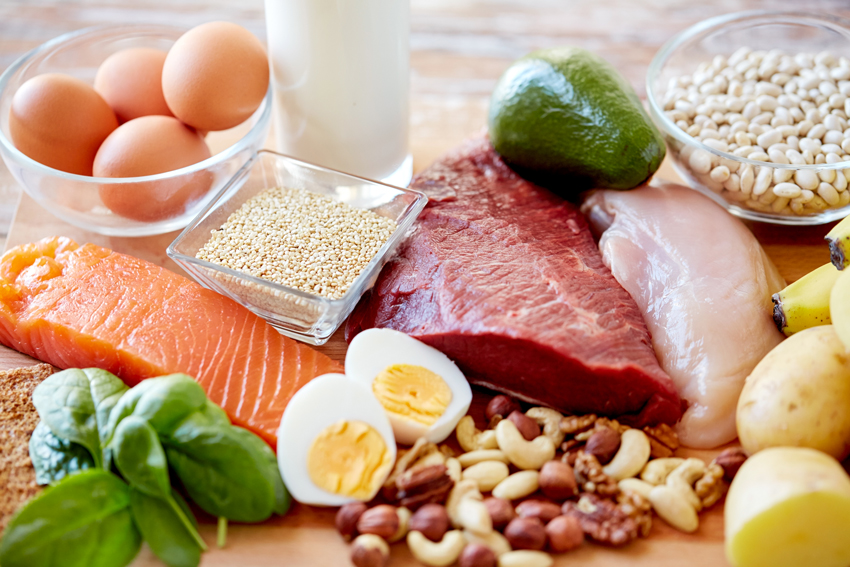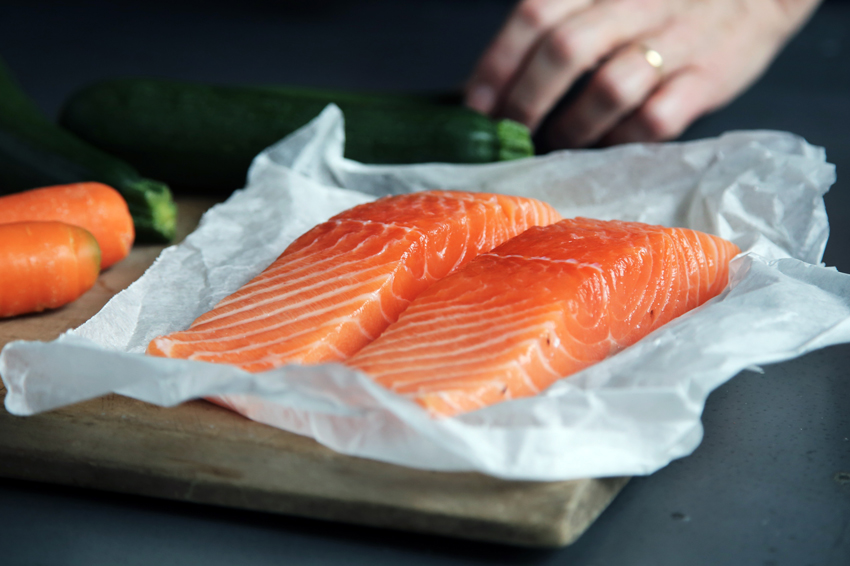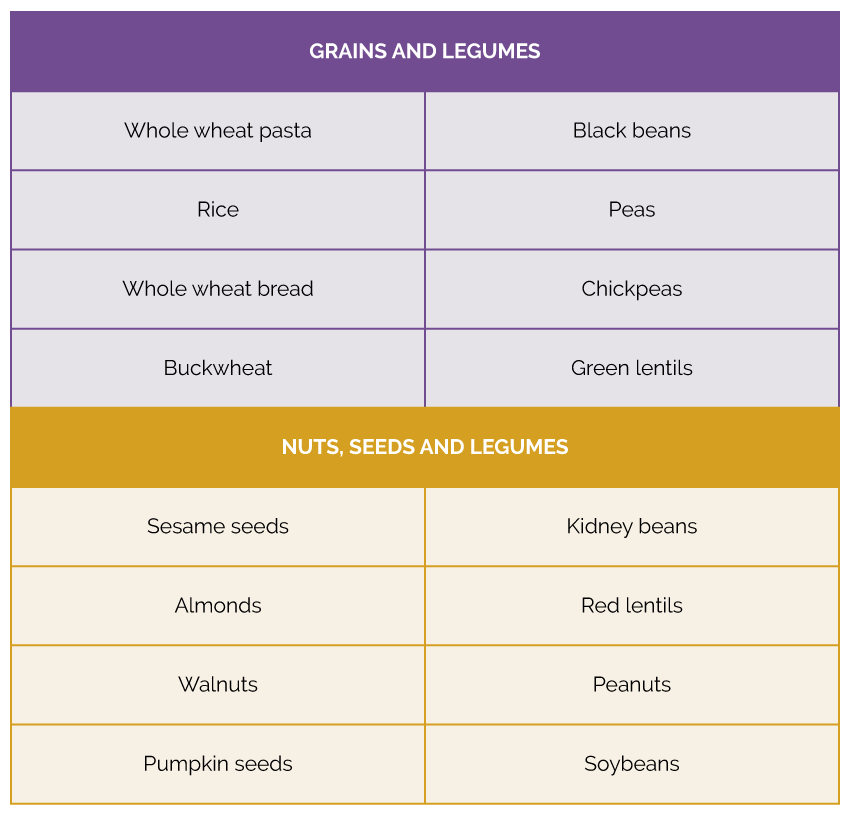Getting the right protein intake in your everyday life is one element that helps guarantee that you stay in great health and reach your fitness goals. But for those of you who don’t eat animal products or want to get the most out of your diet, keeping tabs on the quality of the protein you eat is critical. This is when the concept of protein combining comes into play. The FizzUp trainer tells you more about this dietary strategy that’s also part of FizzUp Nutrition*.
Amino acids are like links that make up chains of protein. About 500 different kinds of amino acids exist in nature, but there are only about 20 that make up protein in mammals. Your digestive system breaks down protein into amino acids, which are then sent into your bloodstream. From there, they’re used for several body functions and constructing other protein that makes up your muscles, organs and many other tissues.
You need them in order to build muscle mass and keep your body and the vital metabolic processes that depend on protein running normally. It’s like needing bricks to build a sturdy, beautiful house or give it a thorough renovation.
Among the 20 amino acids present in mammals, 11 are considered “non-essential” for the adult male. Your body can create them when it needs to from other amino acids and raw materials. This is the process of forming complete protein by combining amino acids.
The other nine are known as “essential” amino acids that your body absolutely has to have and can only get from food. The essential amino acids are histidine, isoleucine, leucine, lysine, methionine (which is converted into cystine), phenylalanine (which is converted into tyrosine), threonine, tryptophan and valine.

Animal protein is called “complete” protein, containing nine essential amino acids in proportions adequate enough to be used by the body. What’s more, it contains high amounts of leucine, an essential amino acid that’s a precursor for protein synthesis (it’s like the “on” switch) and is better absorbed, too. These are all factors that influence your ability to stay in good health and make progress toward your goals.
Plant-based protein is called “incomplete” protein. Although it also contains essential amino acids, incomplete protein doesn’t contain the right proportions to stimulate maximum protein synthesis or create complete protein. Its composition of amino acids varies too widely because it contains only one or several “limiting” amino acids.
If you’re a vegan or vegetarian, you need to pay particularly close attention to the sources of the protein you eat in order to ensure that you’re satisfying your essential amino acid requirements. This is where combining plant-based protein comes in. Did you know that if the content of a single essential amino acid in your diet is lower than your needs, this limits the use of other amino acids, hindering the normal rate of protein synthesis, even if you’re eating the right amount of protein in your diet?
For instance, grains are extremely low in lysine. Legumes such as beans, lentils and peas are high in lysine, but are poor sources of tryptophan, methionine and cystine. Fortunately, grains contain acceptable amounts of amino acids. So when you combine grains and legumes, you’ll get your full intake of essential amino acids.
In the mid-1970s, the idea to combine plant-based protein at every meal became popularized so that vegetarians would consume enough protein and essential amino acids in order for them to achieve a “complete” spectrum of amino acids. Although it was a good idea, this method is now obsolete because today, we balance our essential amino intake throughout the day.
Many studies have shown that a wide range of plant-based foods eaten within a 24-hour period gives you enough protein and all the essential amino acids you need, which means that protein combining can be done over the span of an entire day, instead of during a single meal.

The human body keeps a reserve of free amino acids called the “pool,” which it uses to create the combinations it needs. The amino acids you get from food go to this spot where they’re used to form new complete protein.
Let’s say you eat a meal that’s mostly made of corn. Corn only contains a very small amount of lysine, an essential amino acid. This hinders and eventually stops the protein synthesis and the processes that come as a result of it because there isn’t enough lysine to make this possible.
The good news is that because lysine is already found in your body’s storage reserve of free amino acids, it can be combined with the amino acids in the corn to form complete protein so that the processes will continue.
Next, let’s say you eat soy for dinner the same day or the next. Soy is high in lysine and the lysine you get from this meal will help replenish the pool of free amino acids to make up for the amount of lysine that was used, keeping your essential amino acid reserve full.
For meat eaters and vegetarians who consume sources of complete protein in their everyday diet, such as eggs and dairy products, you’ll get enough essential amino acids, given that you’re satisfying your daily recommended intake of protein depending on your fitness goal. In this case, you don’t have to worry about combining proteins.
Vegans, or people who don’t eat any animal products whatsoever, are the ones who need to put more careful planning into their diet. As you might have already guessed, all you need to do is combine several sources of complementary plant-based protein over a span of 24 hours.
Here are a few ways you can pair proteins in this particular case:

Some plant foods even contain all nine essential amino acids, such as quinoa, soy and hemp.
Now you know even more about protein and nutrition thanks to the FizzUp trainer. Try protein combining if you’re a vegan, vegetarian or want to optimize quality of your eating habits. Take the time to carefully choose the right foods to achieve a balanced diet that’s free of any amino acid deficiency! Keep an eye out for even more innovative ways to stick to wholesome nutrition with loads of recipes that work for a vegetarian diet and get you the amino acids your body needs!
*FizzUp Pro feature
Join the 7 million users already registered on FizzUp
Join us